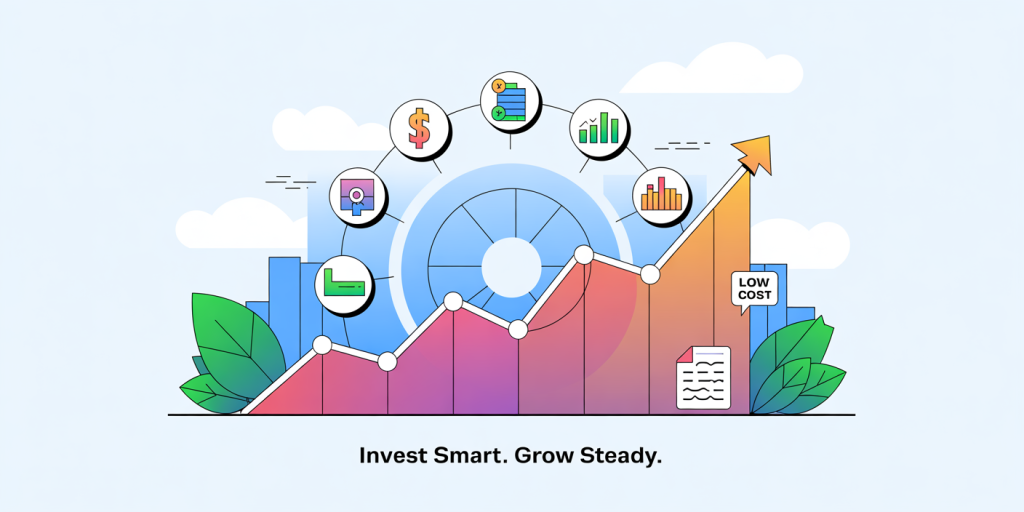How to Start Investing with Little Money
Anúncios
Investing is often perceived as an activity reserved for the wealthy, but this misconception can deter many people from taking the first steps toward financial growth. In fact, starting to invest with little money is not only possible but also practical when approached with the right strategies and knowledge. Whether your initial investment capital is $50, $100, or a few hundred dollars, there are numerous options to help you build wealth gradually and smartly. This article explores actionable methods, real-world examples, and comparative data to guide you through starting your investment journey even with limited funds.
Why Investing with Little Money Matters
Anúncios
In modern financial landscapes, the power of compound interest and early investment cannot be overstated. According to a 2023 report by the Federal Reserve, over 50% of Americans who engage in investing began with less than $1,000. This demonstrates that entering the market does not demand large capital upfront. Even modest investments can grow substantially over time, thanks to compound interest, which Albert Einstein famously described as the “eighth wonder of the world.”

For example, if you invest $100 monthly in a diversified portfolio with an average annual return of 7%, your investment could grow to approximately $143,000 over 30 years. The key takeaway is that consistent investing, regardless of starting amount, unlocks the potential for financial security and wealth creation.
Utilize Micro-Investing Platforms
Micro-investing platforms have revolutionized how people approach investment by eliminating high entry barriers. Platforms such as Acorns, Stash, and Robinhood enable users to invest small amounts — sometimes even the spare change from everyday purchases. Acorns, for instance, rounds up purchases and invests the difference automatically, making it effortless for beginners to start without feeling a pinch.
A real case involves Sarah, a 28-year-old teacher who began with just $5 on Acorns. Over three years, her consistent use of the app combined with monthly contributions of $50 helped her portfolio grow to more than $3,000. While it’s not an enormous figure, it showcases how small, regular investments translate into meaningful growth without requiring large upfront capital.
| Platform | Minimum Investment | Fees | Key Advantage |
|---|---|---|---|
| Acorns | $5 | $1–$3/month | Automatic round-ups |
| Stash | $1 | $1–$3/month | Educational content |
| Robinhood | $0 | $0 | Commission-free stocks |
These platforms provide diversified portfolios with low fees, making them highly accessible. When comparing fees and available features, it’s essential for new investors to consider each platform’s cost structure relative to their monthly contributions to maximize gains.
Embrace Exchange-Traded Funds (ETFs)
Exchange-Traded Funds (ETFs) are highly recommended for investors with limited funds who desire diversification. ETFs represent a collection of assets like stocks or bonds, packaged into a single tradeable fund. This diversification reduces risk compared to purchasing individual stocks. Many brokerages now offer ETFs with no minimum purchase requirements, opening the door for those with small investment amounts.

For example, John, a recent college graduate, began investing with just $200 in an ETF that tracked the S&P 500 index. Over five years, due to consistent contributions and market growth, his portfolio reached nearly $3,500. Data from Morningstar shows that the average annual return of S&P 500 ETFs has hovered around 10% over the past decade, underscoring their strong performance and suitability for small investors.
Comparatively, buying individual stocks might require more capital and carries higher risk due to lack of diversification. ETFs provide a balanced middle ground, promoting steady growth with minimal oversight.
Consider Dividend Reinvestment Plans (DRIPs)
Dividend Reinvestment Plans (DRIPs) offer another practical approach for investors with limited resources. DRIPs allow investors to reinvest their dividends automatically, compounding their returns without needing fresh capital. Additionally, many DRIPs offer fractional share purchases, meaning you don’t have to worry about the high cost of some stocks.
Take the case of Maria, who invested $500 in a blue-chip company’s DRIP. Over three years, by reinvesting dividends and adding minimal monthly contributions, her portfolio grew to $800—much of it fueled by dividend compounding. According to NASDAQ, companies that pay consistent dividends often provide better long-term stability, making DRIPs an excellent choice for conservative investors.
| Investment Type | Initial Cost | Risk Level | Liquidity | Suitable For |
|---|---|---|---|---|
| Individual Stocks | $100+ | High | High | Risk-tolerant investors |
| ETFs | $50+ | Medium | High | Beginners wanting risk spread |
| DRIPs | Variable | Low-Medium | Medium | Long-term, dividend-focused investors |
DRIPs combine the benefits of passive income with the power of compounding and long-term investment, ideal for those just starting out with limited money.
Take Advantage of Employer-Sponsored Retirement Plans
For many employees, employer-sponsored retirement plans such as 401(k)s or 403(b)s represent some of the best investment opportunities, especially if you have little disposable income. These plans often come with employer matching contributions, which significantly multiply the value of your investment.

Consider a scenario where you invest 5% of your $40,000 annual salary into a 401(k), and your employer matches 50% of your contribution. This means your actual contribution is effectively 7.5%, combining your money with free funds from your employer. The benefits of tax deferral and compounding further enhance growth. According to Vanguard’s 2023 report, the average 401(k) balance for investors aged 25-34 is approximately $29,000, often built gradually over time from small regular contributions.
Utilizing these plans maximizes returns without demanding large upfront investments and incentivizes long-term saving, a crucial strategy for wealth building.
Explore Real Estate Crowdfunding
Real estate traditionally requires substantial capital, often making it inaccessible for beginners. However, real estate crowdfunding platforms like Fundrise and RealtyMogul have emerged, allowing investors to participate with as little as $500. These platforms pool funds from many investors to buy commercial or residential properties, distributing rental income and appreciation gains.
In a practical example, Mark invested $1,000 via Fundrise. Over two years, he received preferred quarterly dividends averaging 6% annually. While real estate investing carries inherent risk, crowdfunding diversifies this risk and provides exposure without the hassles of property management.
| Investment Option | Minimum Investment | Average Returns | Risk Level | Liquidity |
|---|---|---|---|---|
| Direct Real Estate Purchase | $50,000+ | 8-12% | Medium-High | Low |
| Real Estate Crowdfunding | $500 | 5-8% | Medium | Medium (usually quarterly liquidity) |
| REITs (Real Estate ETFs) | $50 | 7-9% | Medium | High |
Real estate crowdfunding bridges the gap between high capital requirements and accessibility, making it a compelling choice for small investors seeking portfolio diversification.
Future Perspectives: Investing Small for Long-Term Gains
The landscape of investing continues to evolve, increasingly accommodating investors with limited capital. Advancements in fintech, regulatory changes lowering minimum investment requirements, and the proliferation of educational resources empower more people to start early. According to a 2024 report by Deloitte, there is an expected 25% growth in new retail investment accounts opened with less than $1,000 in the next five years.
The continued rise of artificial intelligence and machine learning in portfolio management is also foreseeably transforming investment strategies. Robo-advisors will offer greater personalization and risk management, further enabling small investors to optimize returns without heavy financial or educational burdens.
Moreover, behavioral finance research underscores the importance of early and consistent investing habits regardless of the amount. Small investments build discipline and confidence, providing valuable experience that can lead to better financial decision-making over a lifetime.
Summary
Starting to invest with little money is not just feasible but advisable, given the power of time and compounding. Using micro-investing platforms, ETFs, DRIPs, employer-sponsored plans, and real estate crowdfunding creates a diverse and manageable investment approach tailored to small budgets. Real-life examples and comparative data demonstrate the practical benefits and opportunities accessible to new investors. As technology continues to evolve and democratize access to financial markets, the future looks promising for those willing to begin investing at any scale, unlocking their financial potential for long-term wealth building.
